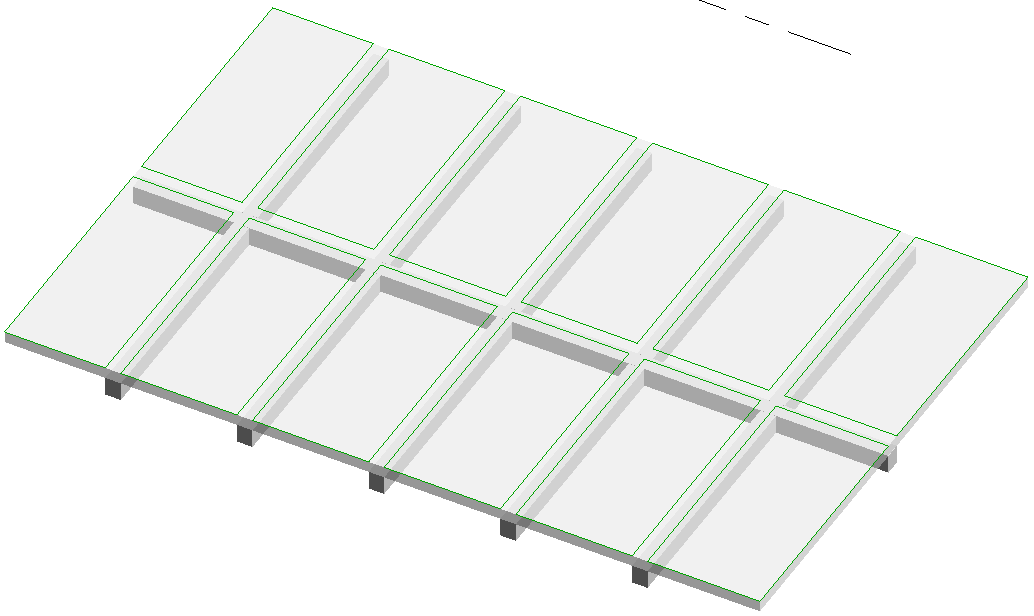Forge Data Days and JoinGeometryUtils
Finally a chance to meet and learn live about Forge, the updated developer's guide and a nice JoinGeometryUtils sample:
- Revit 2023 developer's guide
- Forge Data Days
- Obtaining closed loops for joined element parts
- Create and style your QR code
- La Serre – greenhouse wheelbarrow ballet
Revit 2023 Developer's Guide
The English version of the Revit 2023 Developer's Guide is now online.
The development team is still actively working on an issue with the Japanese text.
Forge Data Days
Finally, after the world-wide pandemic break, which also affected our traditional yearly DevDays, we can meet again live, face to face:
The Forge Data Days are coming up soon, a one-day, in-person event happening in 20 cities worldwide, to learn how to fully unlock the value of your data with Forge. There are a limited number of seats available for each event, so I encourage you to register as soon as possible once you have decided that this is of interest for you.
At Forge Data Days, you’ll hear directly from experts on how Forge is powering enterprise digital transformation. See how we are making data more granular, standardized, and transparent. This can help you connect your teams, processes, and workflows. Learn how new Forge data capabilities and APIs can increase your productivity, automation, and profitability.
With the following exclusive Early Bird registration links for the first five locations, you can choose between different dates and European cities to join us at:
- May 31st – Munich, Germany
- June 2nd – Gothenburg, Sweden
- June 7th – Birmingham, UK
- June 9th – Milan, Italy
- June 14th – Barcelona, Spain
- All event locations
Personally, I will probably be joining the event in Barcelona.
Registration opens to the public today, May 3rd, and spots will fill up fast, so don't wait too long making up your mind...
To learn more about the event, please check out the Forge Data Days global event series announcement and the Forge Data Days event page.

Obtaining Closed Loops for Joined Element Parts
Returning to the Revit API, Richard RPThomas108 Thomas shared another of his brilliant solutions and adds a new entry to the list of the often overlooked Revit API Util in the Revit API discussion forum thread on how to get curves of a joined slab, to obtain separate curve loops for the separate parts of an element that are generated by joining it with another element:
Question: I have a slab that is joined with a beam. How can I get two contiguous curves as highlighted in this picture?

Answer: The easiest way to obtain the loops for that is to reverse the join order within a transaction that is rolled back so that the beam cuts the slab. Currently, with slab cutting beam, you will get a single edge loop for the slab top face with extra 'contextual' edges where the edge is hidden by the joins.
The below code uses the following JoinGeometryUtils API calls to achieve what you need:
- GetJoinedElements
- IsCuttingElementInJoin
- SwitchJoinOrder

Public Function Obj_220503a(commandData As ExternalCommandData, ByRef message As String, elements As ElementSet) As Result Dim IntUIApp As UIApplication = commandData.Application Dim IntUIDoc As UIDocument = commandData.Application.ActiveUIDocument Dim IntDoc As Document = IntUIDoc.Document Dim FEC_Flr As New FilteredElementCollector(IntDoc, IntDoc.ActiveView.Id) Dim ECF_Flr As New ElementClassFilter(GetType(Floor)) Dim Els As List(Of Element) = FEC_Flr.WherePasses(ECF_Flr).ToElements Dim Curves As New List(Of Tuple(Of List(Of Curve), Plane)) Using Tx As New Transaction(IntDoc, "Gather") If Tx.Start = TransactionStatus.Started Then For i = 0 To Els.Count - 1 Dim El As Element = Els(i) Dim Ids As List(Of ElementId) = JoinGeometryUtils.GetJoinedElements(IntDoc, El) Dim FEC_Fra As New FilteredElementCollector(IntDoc, Ids) Dim ECF_Fra As New ElementCategoryFilter(BuiltInCategory.OST_StructuralFraming) Dim Els0 As List(Of Element) = FEC_Fra.WherePasses(ECF_Fra).ToElements For i0 = 0 To Els0.Count - 1 If JoinGeometryUtils.IsCuttingElementInJoin(IntDoc, El, Els0(i0)) Then JoinGeometryUtils.SwitchJoinOrder(IntDoc, El, Els0(i0)) End If Next IntDoc.Regenerate() Dim geomEl As GeometryElement = El.Geometry(New Options With {.DetailLevel = ViewDetailLevel.Fine}) For Each ob As GeometryObject In geomEl If GetType(Solid) Is ob.GetType Then Dim S As Solid = ob For ix = 0 To S.Faces.Size - 1 Dim PF As PlanarFace = TryCast(S.Faces.Item(ix), PlanarFace) If PF Is Nothing Then Continue For Else If PF.FaceNormal.IsAlmostEqualTo(XYZ.BasisZ) Then Dim CrvSet As New List(Of Curve) Dim CLL As List(Of CurveLoop) = PF.GetEdgesAsCurveLoops For Each CL As CurveLoop In CLL For Each C As Curve In CL CrvSet.Add(C) Next Next Curves.Add(New Tuple(Of List(Of Curve), Plane)(CrvSet, PF.GetSurface)) End If Next End If Next Next Tx.RollBack() End If End Using Using Tx As New Transaction(IntDoc, "Draw") If Tx.Start = TransactionStatus.Started Then For Each item As Tuple(Of List(Of Curve), Plane) In Curves Dim PL As Plane = item.Item2 Dim SKP As SketchPlane = SketchPlane.Create(IntDoc, PL) For Each C As Curve In item.Item1 IntDoc.Create.NewModelCurve(C, SKP) Next Next Tx.Commit() End If End Using Return Result.Succeeded End Function
Create and Style Your QR Code
Moving away from programming topics, I was not aware how much freedom you can have in styling a QR code until I took a look at the qrcode-monkey.
La Serre – Greenhouse Wheelbarrow Ballet
Finally, unrelated to Revit and other hi-tech, just for fun, if you feel like a five-minute humorous poetic break, take a look at La Serre by Didier André and Jean-Paul Lefeuvre, a banjo-accompanied circus artist greenhouse wheelbarrow ballet:
Formés au Centre national des arts du cirque, Jean-Paul Lefeuvre et Didier André ... ces deux circassiens ont étayé leur univers jusqu'à créer en 2001 La Serre, spectacle poético-agricole ... Dans un univers ingénieux, ces "Buster Keaton" de l'horticulture parsèment d'humour absurde et de rêverie aérienne leur grande humanité.
Trained at the national centre of circus art, Jean-Paul Lefeuvre and Didier André ... created La Serre in 2001, a poetic-agricultural show ... in an ingenious universe, these "Buster Keatons" of horticulture sprinkle their great humanity with absurd humour and aerial reverie.